
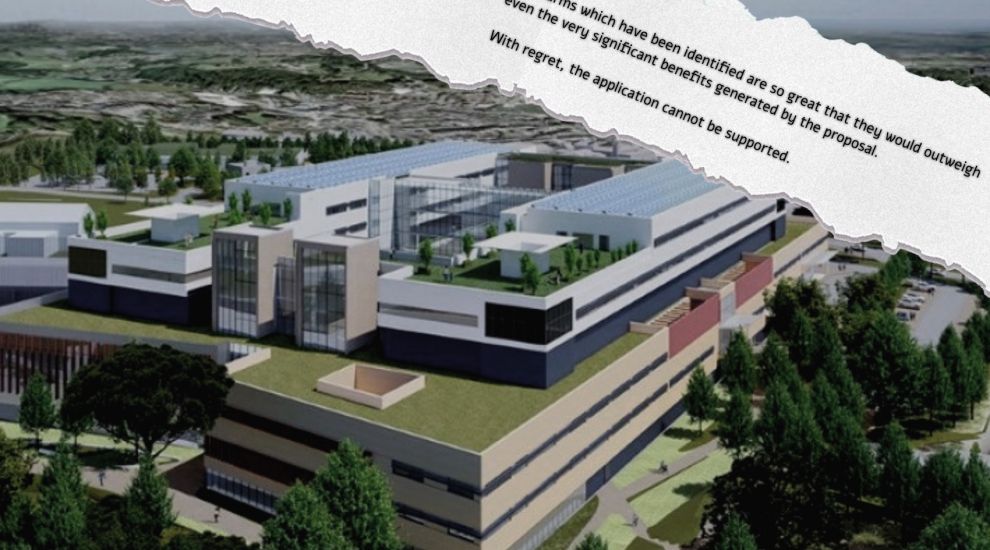

In a major development to the long-running hospital saga, the Government's own Planning Department has that it cannot support the £800m proposals for an Overdale 'health campus'... But why?
The Historic Buildings Team also said it “offers the strongest objections” to the proposals, “notwithstanding the pressures and requirements for a new hospital for the island.”
Their views have been shared in submissions that will be read and digested by an independent planning inspector who is set to review all written evidence, and then hear oral evidence at a week-long public inquiry due to begin on Monday 4 April.
In its ‘proof of evidence’, Planning says that the need for a new hospital is accepted, and it agrees that the Our Hospital proposal would result in “clear and undeniable improvements to Jersey’s health offer”.
However, it then sets out why it believes the inspector, Philip Staddon, should recommend that the current plan is rejected.
Ultimately, Environment Minister John Young will decide to approve or reject ‘P.2021/1670’ but he will be strongly guided by the views of Mr Staddon.
In short, Planning says that “taken in the round, the department concludes that the harms which have been identified are so great they would outweigh even the very significant benefits generated by the proposal.”
Here, Express details why Planning cannot support the application...
Design guidance suggests that new buildings should be no more than 15m high on a ridgeline.
Planning says that the proposed design significantly breaks that.
"The application seeks permission for a main hospital building height between 27- 32m and a length of 190m."
This, Planning point out, is "very substantially in excess" - twice the recommended limit, in fact - of guidance issued in a document called the St. Helier Urban Character Appraisal, which lays out a strategy for development in and around town.
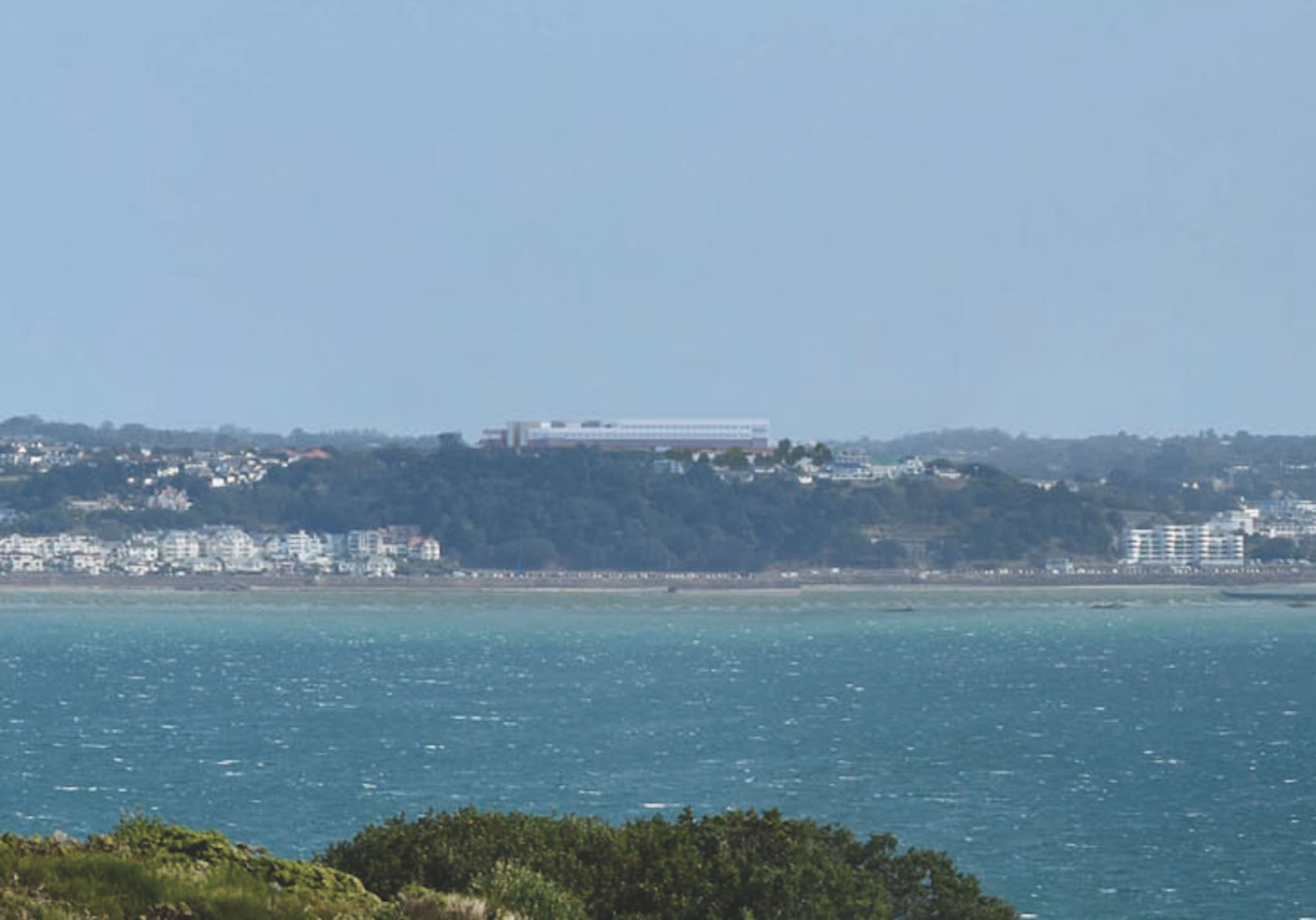
Pictured: The view of the proposed hospital from Noirmont Point.
"The reason for these suggested limits on scale on the ridgeline are plain. The elevated nature of the site, above the town, means that new development will be exposed to view from multiple locations and needs to be lower in scale to avoid harmful impacts."
The department is also critical of the design put forward. The structure, they say, does not contribute positively to the landscape and fails to follow any kind of theme.
Instead, they are simply a "series of horizontally proportioned forms", which are interspersed with "vertically proportioned elements."
"These forms seem to be pushed together in an amalgam of rectilinear blocks, which do not relate to one another. Nor do they have any resonance with the wider setting or character of the area. There seems to be no overall strategy for landing the building on this site."
Overall, Planning concludes that the design is inappropriate for its location.
"The design of the proposed development fails to demonstrate a high quality of design which conserves, protects and contributes positively to the distinctiveness of the landscape and wider setting of the site.
"By reason of its scale, form, design and height, the proposed development would be a prominent structure which would dominate the skyline of the western ridgeline of St. Helier, harming the existing character of that sensitive zone."
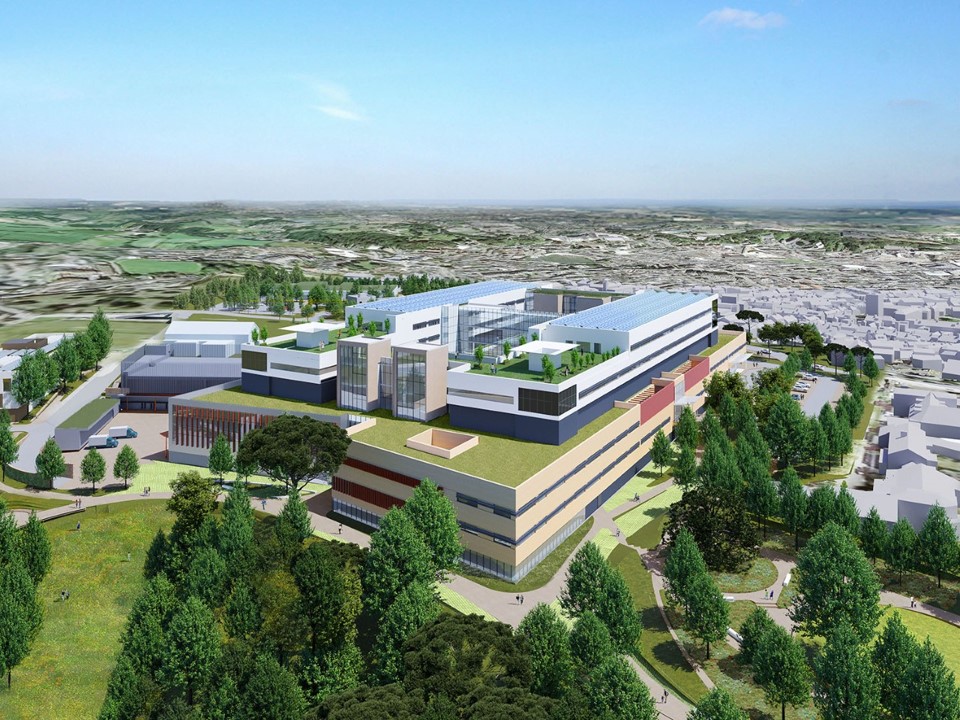
Pictured: Greenery isn't enough to mask it - Planning say that the hospital building needs to be lower to avoid harmful impacts.
Planning also judges that attempts to mask some the building's impact - such as by adding lots of greenery - are inadequate.
"The intention to undertake extensive planting is also noted and welcomed. Unfortunately, the impact of the development on the skyline and important views is such that the views of the proposed buildings would be pronounced and damaging from a range of positions and distances.
"This impact is unlikely to be sufficiently mitigated by landscaping for many years, if ever."
Planning also points out that the proposals will mean the complete destruction of two Listed buildings, as well as an area of "archeological potential".
The buildings are also deemed to be harmful to nearby historical buildings and structures - Elizabeth Castle or the neighbouring Mont à L'Abbé Cemetery, for example - by ruining their setting. This breaches policy in the three-year 'Bridging Island Plan' (BIP).
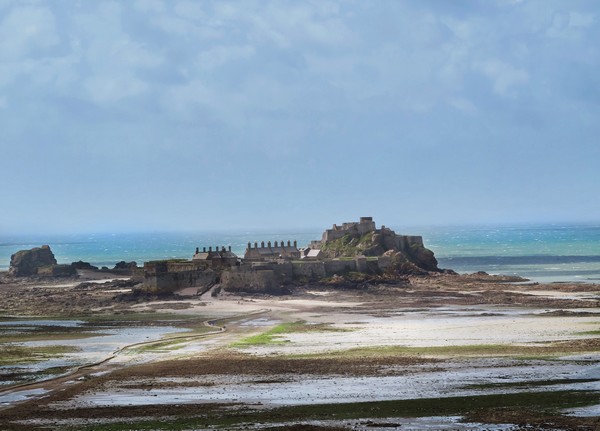
Pictured: It's been suggested that the hospital could ruin the wider setting of important heritage assets like Elizabeth Castle.
In addition to Planning's concerns, the Historic Environment Team within the Government’s Strategic Policy, Planning and Performance Department offers its "strongest objection" to the plans.
“The emerging proposal will have a negative impact on heritage. Two listed buildings will be entirely lost.
“The wider settings of internationally and Island-wide important Grade 1 heritage assets will ne negatively impacted, particularly Elizabeth Castle and Fort Regent.
“The settings of the Mont à L’Abbé Cemetery and the People’s Park will be harmed and there is further concern at the prospect of harm to potential archaeological assets in the fields to the east of Westmount Road."
Indeed, it's believed that Field 1550, which is earmarked for a new mental health unit, is the site of a ‘lost’ dolmen.
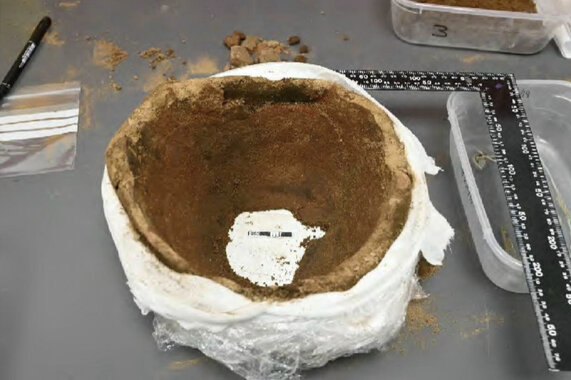
Pictured: This Bronze Age vessel was found in the south-west corner of Field 1550.
While scoping out the site and the neighbouring Field 1551, archeologists found a Bronze Age vessel and tools.
Archaeology aside, the Government's Environmental Land Control Department says that the loss of the fields to the east of Westmount Road would be “regrettable as they are very good early agricultural land.”
Planning points out that there is no plan for how to deal with surface water running off both the hospital and road leading up to it in the application. Drainage is important to prevent waterlogging in the area.
"The disposal of surface water from the development and the associated highway infrastructure (including Westmount Road South) is a significant issue and at the time of writing, no specific proposal or funding has been confirmed and consequently, there is no commitment to a programme for completion of the storm water arrangements.
"This is a serious omission from the applicant’s proposals."
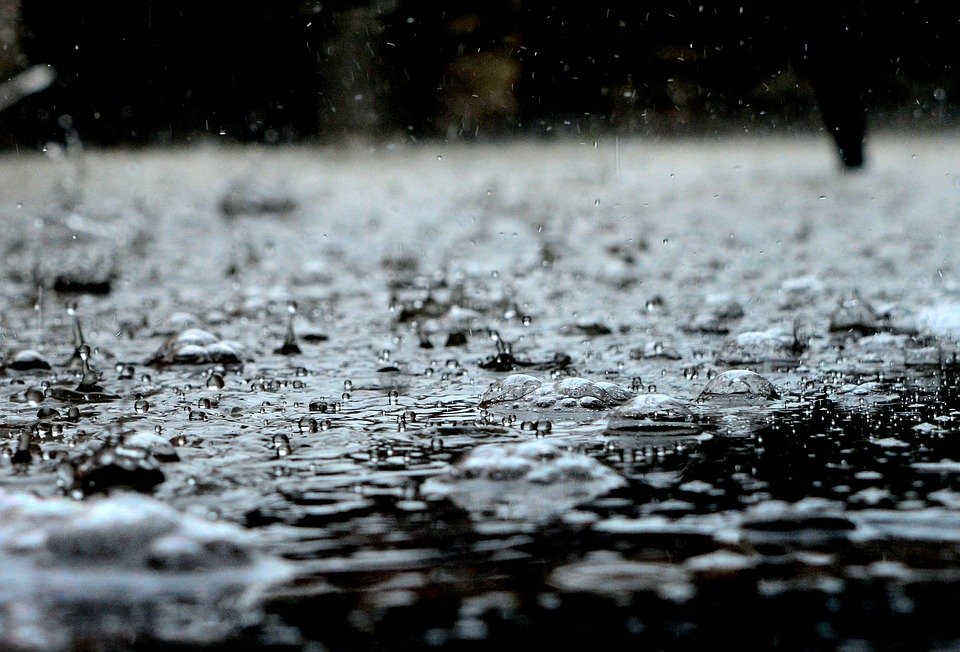
Pictured: The lack of detailed reference to the disposal of surface water was deemed a "serious omission".
In a submission to the planning inspector, the Government's 'Liquid Waste Directorate' says it thinks the best option is to discharge water to the sea. For this, it suggests a new surface water sewer and outfall between St. Aubin's Inner Road and St. Aubin's Bay - through and under the Lower Park and Victoria Avenue.
However, it notes that "specific funding has not been confirmed by Government" for this project, so it is unable to commit to any timeline for one.
The Directorate concludes that it does “not consider there is sufficient detail in the proposals, especially regarding Westmount Road South”.
“We require further consultation until all matters have been resolved,” it adds.
Planning says that the 'health campus' will have a negative impact on various properties, which runs counter to policies in the Bridging Island Plan.
"The proposals provide for several buildings on site of varying size, scale and mass, together with surface area car parks.
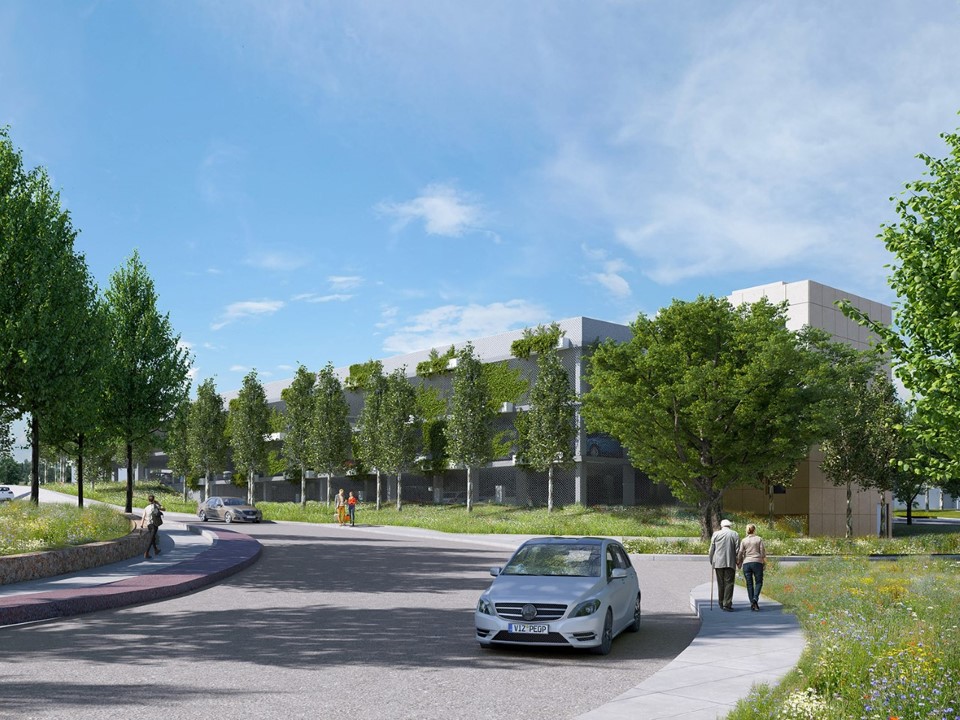
Pictured: An artist's impression of the multi-storey car park. Planning say buildings in the 'health campus' will create tensions.
"Given the size of the site and the locations of these buildings on the site, and car parks pushing out towards the edges of the site, there will ultimately be tensions between the new development and the amenities currently enjoyed by the occupants of those properties.
"...The department considers that the proposals will result in unacceptable issues of amenity, privacy, noise and nuisance."
Planning says that the move of the main hospital to Overdale will have a detrimental impact on the vitality and viability of town because it is further away from the centre.
They point out that the new Island Plan's policies are about enhancing St. Helier "as a place to shop, work, do business and visit."
Pictured: Taking the new hospital out of town could make St. Helier a less "vibrant" place.
"The existing main hospital site is located within the defined St. Helier Town Centre boundary, within easy walking and cycling distance of the main core retail area. As such it serves as a convenient facility as its staff and visitors take advantage of this proximity to readily support the economy of those retail uses.
"By contrast, the proposed development is removed from the centre of St. Helier to a more remote (and difficult to access) location, which does not share these benefits."
Planning concludes that the proposed development would result in the loss of 12 "good quality homes", with no plan to replace them.
Therefore, it says, the proposal is in conflict with two policies in the Bridging Island Plan.
Planning said there was a question mark over the waste that would be generated during construction and how La Collette would be able to cope.
The comments were echoed by the Solid Waste Department, which said: “There is a concern that the [Our Hospital] project team may not have considered that the inclusion of proposals for basement and sub-basement levels within many of the buildings is not a sustainable solution as this will generate large quantities of subsoil materials requiring disposal.
“La Collette has very limited capacity remaining and receives waste from many different construction sites; for this reason the site may not be able to accept all the inert waste generated.”
The Bridging Island Plan was designed with a specific policy - known as C13 - relating to the Our Hospital site.
It says that the development will be supported where “the proposal is not considered to cause serious, unacceptable harm to the character and amenity of the wider area” and “it has been demonstrated that the proposed development represents the best design option relative to be needs of the hospital and the land available.”
CLICK TO ENLARGE: Policy C13 - the specific policy in the Bridging Island Plan which refers to the Our Hospital site.
But Planning says it the proposals have failed the test.
“While the priority is to provide a new hospital on the designated site, the department considers that the proposed development does not meet the key tests required under Policy C13 to facilitate this.”
Judged against this and other policies, Planning conclude that the development “fails to demonstrate a high quality of design which conserves, protects and contributes positively to the distinctiveness of the landscape and wider setting of the site.”
Despite recommending that the application is refused, Planning does highlight areas where it can support it.
"There is no doubt that the proposed Our Hospital planning application performs well on a number of fronts. It is an undeniable and significant boost to the provision of clinical and mental health provision, providing fit for purpose health facilities for islanders, in concert with the Jersey Care Model.
"The enhancements to clinical care and treatments, and the removal of the risks which are inherent within existing facilities, cannot be overstated and weigh heavily in favour of the application."
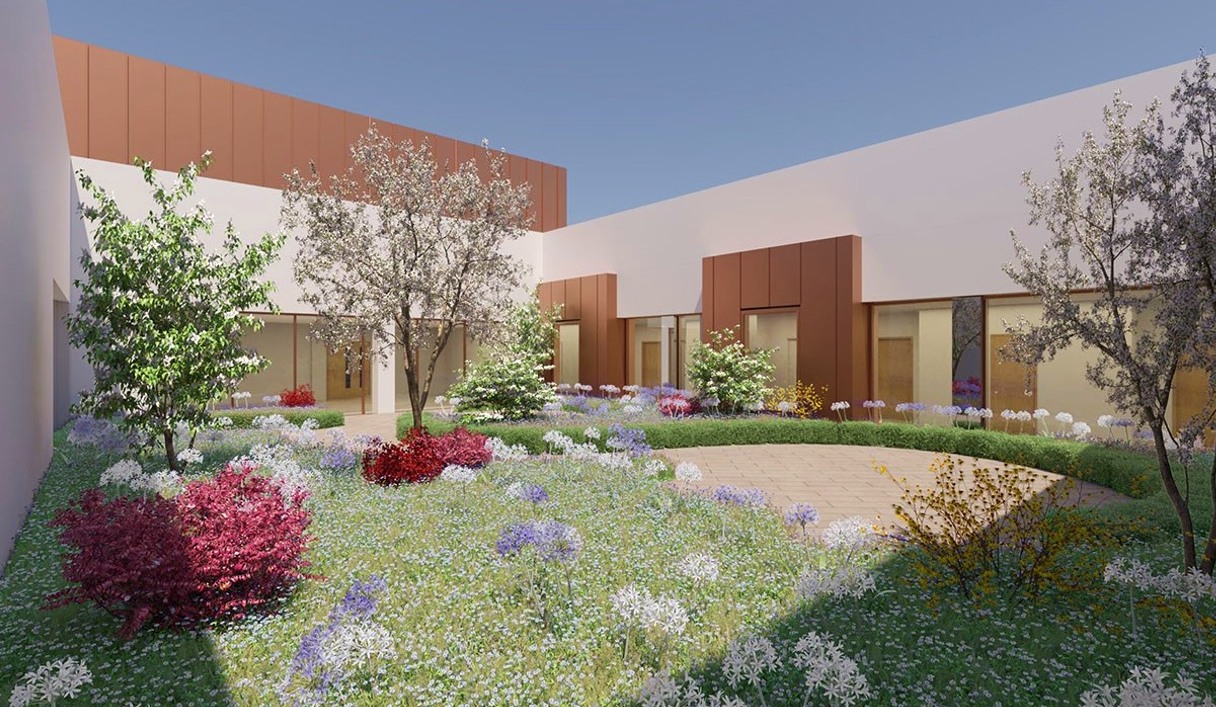
Pictured: Designs for new mental health facilities were lauded by Planning.
It adds: "In planning terms, the proposal is located in an area which complies with the island’s Spatial Strategy. It performs well on several technical measures. The transport and waste solutions and energy reduction targets are all agreed. Furthermore, the landscaping and ecological proposals are accepted and welcomed."
Some of the issues, it says, may be able to be fixed.
"It is unfortunate that the application has not taken the opportunity to include solutions for surface water drainage, the replacement of the Jersey Bowls Club or the replacement of the 12 homes which will be lost.
"However, these are largely technical matters which could be resolved through the imposition of planning conditions or agreements."
Overall, Planning says it cannot recommend that the inspector backs the application.
"The department cannot escape the conclusion that this proposal would result in serious unacceptable harm to the character of the site, its immediate surrounding area and, indeed, large areas of the south coast, from where the proposals would be clearly visible. The proposed architectural design, even when combined with the landscaping proposals, does little to mitigate this harmful impact.
"It is the role of the Inspector to weigh the benefits and harms of the proposal and to form a recommendation to the Minister. Taken in the round, the department concludes that the harms which have been identified are so great that they would outweigh even the very significant benefits generated by the proposal. With regret, the application cannot be supported."
Comments
Comments on this story express the views of the commentator only, not Bailiwick Publishing. We are unable to guarantee the accuracy of any of those comments.